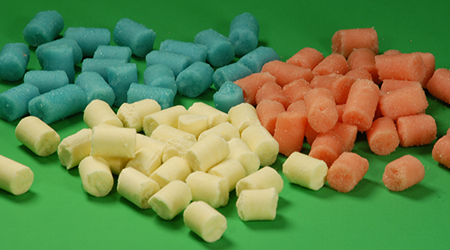
We get lots of questions about Taconic Biosciences'
Diet Induced Obese B6 model. We have pulled some of those questions together into this Q&A:
Q: Do You Have Any Data Regarding the Development of Neuropathy in Obese Mice?
Currently, Taconic does not have in-house data on the diabetic neuropathy of C57BL/6NTac DIO mice, however several publications look at diabetic neuropathy in DIO mice. A review entitled "
Mouse Models of Diabetic Neuropathy" by O'Brien et al. in ILAR Journal offers an excellent overview of DIO mice and other models of diabetic neuropathy, as well as defining characteristics of each model.
- Diet alone can sufficiently induce neuropathy in nondiabetic C57BL/6 mice. Similar to human subjects with pre-diabetes and obesity, high fat diet (HFD) fed mice develop peripheral nerve functional, but not structural, abnormalities and, therefore, are a suitable model for evaluating dietary and pharmacological approaches to halt progression and reverse diabetic neuropathy at the earliest stage of the disease. (Obrosova et al. 2007)
- Mice fed a high-fat diet developed symptoms of obesity and diabetes by four weeks. After eight weeks, the total number of duodenal myenteric neurons and the synaptophysin density index were reduced and transmission electron microscopy showed axonal swelling and loss of neurofilaments and microtubules, suggesting compromised neuronal health. (Stenkamp-Strahm 2013)
Q: When Should I Start Feeding with HFD?
The majority of mice for high fat diet studies are placed on high fat diets in the young adult stage, typically at six to eight weeks of age. Some studies such as the impact of poor diet on child development or the impact of a high fat diet on older adults will require starting mice on diets at different ages.
Q: Should Animals be Housed Individually, or in Groups?
Group housed mice tend to show more weight variability than mice that are singly housed, most likely due to dominant mice eating more food. Group housed DIO mice will generally gain more weight, more rapidly, than singly housed mice, though this varies depending on the mouse strain and model selected.
Q: How Often Should the Diet be Replaced?
For storage, it is best to consult with the feed manufacturer. For
Research Diets Inc D12942, specifically, the recommended shelf life is six months when stored in a freezer. For animal cages, diet should be replaced one to two times per week.
Q: Which Substrain Are You Using?
We're using
C57BL/6NTac mice, preconditioned with a high fat diet starting at six weeks of age.
Q: Do You Have Any Data to Show on NAFLD Phenotype in These Mice?
"B6N genetic background, which has become the preferred strain for generating genetically modified mouse models, is appropriate for studies examining the early stages of liver steatosis and for generation of genetically engineered mice with a predisposition to NAFLD." (Podrini et al. 2013)
- Ellacott KLJ, Morton GJ, Woods SC, et al (2010) Assessment of Feeding Behavior in Laboratory Mice. Cell Metab. 12(1):10-7.
- O'Brien PD, Sakowski SA, & Feldman EL (2014) Mouse Models of Diabetic Neuropathy. ILAR J. 54(3):259-272.
- Obrosova IG, Ilnytska O, Lyzogubov VV, et al (2007) High-fat diet induced neuropathy of pre-diabetes and obesity: effects of "healthy" diet and aldose reductase inhibition. Diabetes. 56(10):2598-2608.
- Podrini C, Cambridge EL, Lelliott CJ et al. (2013) High-fat feeding rapidly induces obesity and lipid derangements in C57BL/6N mice. Mamm Genome. 24(5-6):240-51.
- Stenkamp-Strahm, CM (2013) High-fat diet ingestion correlates with neuropathy in the duodenum myenteric plexus of obese mice with symptoms of type 2 diabetes. Cell and Tissue Res. 354(2)381-394.
- Wang, C-Y & Liao, JK (2012). A Mouse Model of Diet-Induced Obesity and Insulin Resistance. Methods Mol Biol. 821:421-433.
 View the Taconic Biosciences' Webinar:
View the Taconic Biosciences' Webinar:
Didn't find your answer? Ask your question here and our scientists will contact you.
 We get lots of questions about Taconic Biosciences' Diet Induced Obese B6 model. We have pulled some of those questions together into this Q&A:
We get lots of questions about Taconic Biosciences' Diet Induced Obese B6 model. We have pulled some of those questions together into this Q&A: 















.jpg)

.jpg)
.jpg)
.jpg)
.jpg)





.jpg)


.jpg)
.jpg)




.jpg)




.jpg)

.jpg)




